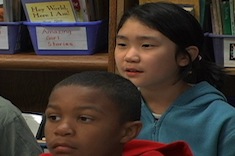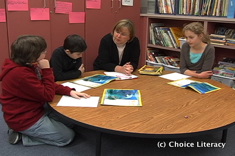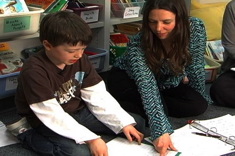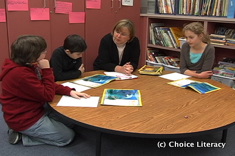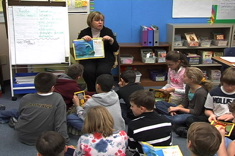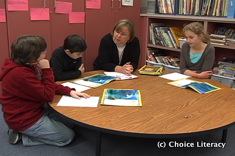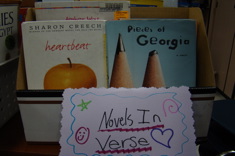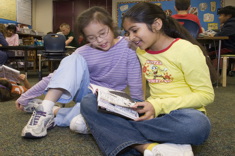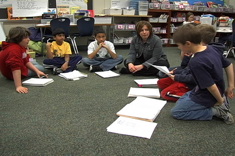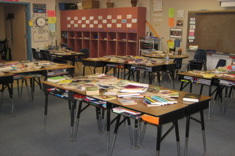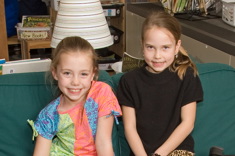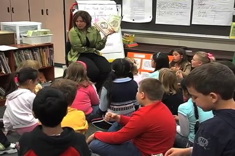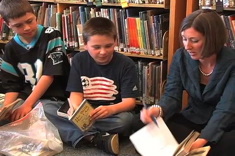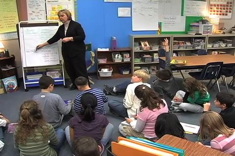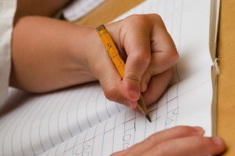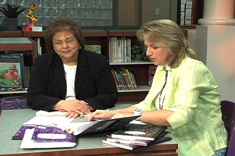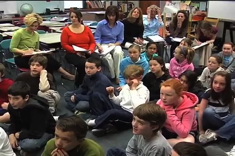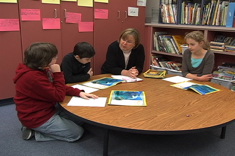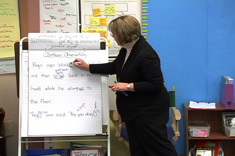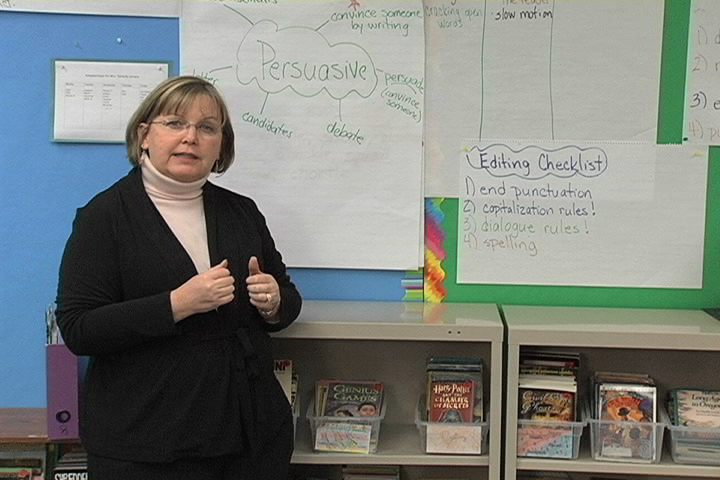5th
Latest Content
Ecstatic: When Words Shape Thinking
Carol Wilcox prepares her struggling intermediate readers for state exams, and finally experiences a breakthrough in linking vocabulary learning to authentic reading.
Mentor Texts for Urban Students
What texts work best for students with urban backgrounds? Shari Frost has suggestions for teachers.
Planning to Teach with Mentor Texts: Two Examples
Once you’ve found a text you love, how do you plan lessons from it? Karen Terlecky takes teachers through the process of selecting and designing instruction with two favorite texts.
Sarcasm Is a Useful Teaching Tool — NOT
How does sarcasm hurt students? Heather Rader counts the ways.
Getting and Giving Student Feedback
How can we help students be more reflective in our classrooms, giving us the feedback we need to make them better places for learning? Heather Rader has suggestions.
The Importance of Book Clubs for Learners of Any Age
Karen Terlecky brings lessons from her adult book club to her structure of book clubs in her 5th grade classroom. The article includes launching and management tips.
Thinking About 5th Grade Read Alouds
Karen Terlecky develops a plan for read alouds with her 5th grade students. She explains her choices, comparing selections to last year's list.
Great Books to Share When Studying the Ecosystem (BOOKLIST)
Karen Terlecky shares books for studying the ecosystem in our this booklist.
Books to Get Us Ready for Summer Vacation
Franki Sibberson finds preparing students for summer reading is a little different this year, now that she has moved from classroom teaching to work in the school library. Here are some terrific books to get students excited about summer.
Novels in Verse (BOOKLIST)
Franki Sibberson provides a booklist of "novels in verse" – a genre intermediate readers enjoy, especially those who struggle with longer texts.
Fairy Tales for Middle Grade Readers (BOOKLIST)
This booklist is on fairytales, and there are a range of reading levels and styles to support readers of different ability levels.
Knitting, Independence, and Small Group Routines for Intermediate Readers
Franki Sibberson uses a knitting analogy to reflect upon alternatives to guided reading in the intermediate grades that promote more student independence.
New Versions of Old Favorites (BOOKLIST)
Recently there has been less interest in retelling of classic tales by children’s book authors. Franki Sibberson’s booklist highlights some of the best new twists on favorite children’s stories.
A Tornado of Books
By upending the classroom library and asking students to sort and reorganize it, Karen Terlecky gets insight every year into the ways students categorize texts, as well as their emerging understanding of genre.
Strong Girls (BOOKLIST)
If Nancy Drew was an important literary role model for you when you were a preteen, you might enjoy a peek at the sassy new gals who are influencing our tweens.
To Fart or Not to Fart? Reflections on Boy Writers
"To Fart or Not to Fart?" was the question at the first meeting of Jennifer Allen's boys' literacy study group for teachers, and what followed was a rollicking discussion of writing, taste, and books that hook boys.
Short Units, Big Messages
Those "in-between" writers in grades 3 and 4 present special challenges to teachers. Some are fluent and versatile, writing page after page of drafts. Other students struggle to craft even a sentence. Franki Sibberson explains how short texts and brief genre units can help intermediate writers with a wide range of abilities.
Teaching Themes Through Keywords
Aimee Buckner presents a simple strategy for helping students look for themes as they read a new text.
Staying Focused in Literacy Workshops
Clare Landrigan meets with a group of fifth graders to talk about what’s going well in literacy workshops, and to set individual goals.
Making Predictions and Finding Evidence in Text
In this video from a fifth-grade small group, Clare Landrigan talks with students about making predictions and finding evidence in text.
Fifth-Grade Word Study Homework
Karen Terlecky’s fifth-grade students share what they learned from their word study homework.
Helping Struggling Writers
How can we help students who are stuck when it comes time to write? Franki Sibberson shares a couple new strategies, including a book basket of texts selected by students themselves as useful for sparking writing topics in this photo essay.
Writing Strengths Anchor Chart
Suzy Kaback's anchor chart activity builds a sense of community and peer editing connections in her middle school classroom.
Teacher/Principal Conferring: Reflecting on Readers’ Notebooks
In this conference, Principal Karen Szymusiak and 5th grade teacher Liz Cramer discuss the ways Liz uses readers’ notebooks in her classroom.
Demonstration Lesson: Inferring Character Traits
In this demonstration lesson from a 5th grade classroom, Clare Landrigan leads students through a reading and discussion of inference and character development.
Small Group After Demonstration Lesson
In this small group after a demonstration lesson in a 5th grade classroom, Clare Landrigan talks through strategies for inferring the meaning of new words while reading.
5th Grade Strategy Group on Summarizing
In this strategy group, Karen Terlecky brings together three of her 5th graders to reread a nonfiction article shared with the whole class. They discuss main ideas, and do a writing activity together to build summarizing skills.
Fifth-Grade Room Tour
"The Sisters" (Gail Boushey and Joan Moser) show the many creative and low-cost ways in which a colleague displays books and materials to build interest in literacy.
5th Grade Sentence Observation
Karen Terlecky explains the sentence observation routine in her 5th grade classroom, and provides a video example of students in action analyzing sentences.
5th Grade Room Tour
Karen Terlecky’s classroom tour focuses on the anchor charts and wall displays she uses to promote literacy with her 5th grade students.
Browse Content By
Type
Category
- Assessment Tools
- Big Fresh Archives
- Booklists
- Choice Numeracy
- Classroom Design
- Common Core
- Community Building
- Conferring
- Content Literacy
- Digital Literacy
- English Language Learners
- Equity
- Family Relations
- Free Samples
- Guiding Groups
- Leadership
- Literacy Coaches
- Mentor Texts
- Minilessons
- New Teacher Mentors
- Podcasts
- Poetry
- Quote Collections
- Reading Strategies
- Self Care
- Struggling and Striving Learners
- Talking and Listening
- Teacher Study Groups
- Teaching Reading
- Teaching Writing
- Word Study and Vocabulary
Author
- Melissa Quimby
- Nawal Qarooni
- Gwen Blumberg
- Julie Cox
- The Lead Learners
- Hannah Tills
- Josie Stewart
- Ruth Metcalfe
- Mallory Messenger
- Becca Burk
- Jodie Bailey
- Vivian Chen
- Mary Brower
- Tiffany Abbott Fuller
- Stephanie Affinito
- Ruth Ayres
- Leigh Anne Eck
- Heather Fisher
- Shari Frost
- Julie Johnson
- Suzy Kaback
- Gigi McAllister
- Shirl McPhillips
- Melanie Meehan
- Cathy Mere
- Debbie Miller
- Tara Barnett and Kate Mills
- Tammy Mulligan
- Dana Murphy
- Bitsy Parks
- David Pittman
- Brenda Power
- Heather Rader
- Matt Renwick
- Mandy Robek
- Christy Rush-Levine
- Gretchen Schroeder
- Jen Schwanke
- Brian Sepe
- Katherine Sokolowski
- Stella Villalba
- Jennifer Vincent
Grade Level
Choice Literacy Membership
Articles
Get full access to all Choice Literacy article content
Videos
Get full access to all Choice Literacy video content
Courses
Access Choice Literacy course curriculum and training


